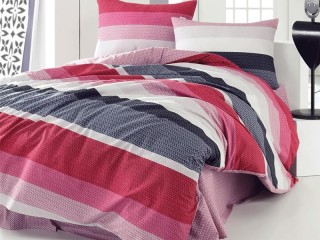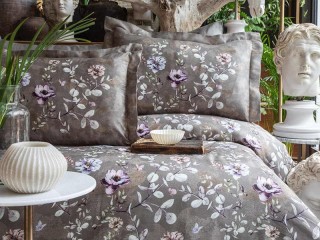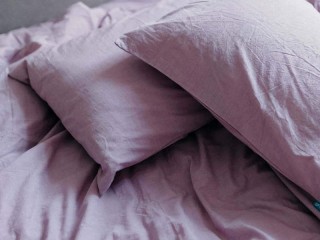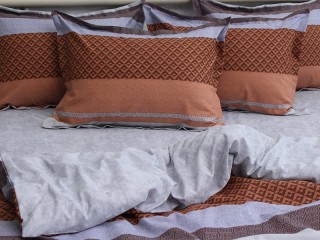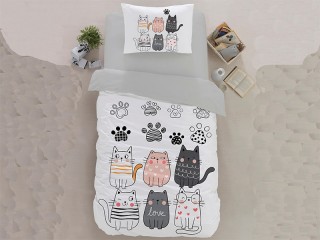Polyester is a substance obtained from petroleum by means of preliminary processing. Just like cotton, it is a plant, material, filler and fiber, polyester is a chemical composition of a substance from which, in turn, fabrics and fibers and many other products are made. In turn, oil is plant residues, which, under the force of pressure and certain physicochemical processes, were transformed into a liquid with a prevailing carbon content.
Polyester manufacturing process

Research in the field of polyesters began in the UK in 1935 at Calico Printers Assotiation LTD, which was engaged in the production and dyeing of textiles. And in the 1960s, the mass production of polyester products began. The second name for polyester is polyethylene terephthalate, also called lavsan - this name was mainly adopted in the USSR, PET, PET, dacron, mylar - this is the name of polyester mainly in Europe. Pure polyester is obtained by chemical polycondensation reaction from polybasic acids. It turns out a solid opaque white substance, which, when heated, changes its physical properties allowing you to obtain products of various shapes, such as various fabrics, fillers for blankets, pillows, clothes, photographic films, all types of films, plastic products, plastic bags, plastic cases in household appliances and others. Virtually non-degradable in nature, a PET bottle has a degradation life of over 450 years.

Is polyester synthetic?
Yes, 100% polyester is pure synthetic. Since it is produced from synthesized compounds through chemical reactions, that is, the natural substances of the oil from which polyester is made completely changed their nature and chemical structure and became completely different.
Polyester filler and fiber what is it
Polyester fibers include syntapon, thinsulate, artificial swan down, holofiber, bio down and all types of siliconized fibers. They all have different physical properties due to different manufacturing technologies, but the formula is the same for all as is the composition. It is produced by the extrusion method, which consists in preheating the polyester solid and forcing it through very thin holes. Next, the polyester fibers are cooled. All fillers are characterized by good thermal insulation properties and a long service life, except for syntapon, which tends to quickly crumble.

Polyester fabric is description and properties
The fabric is formed by weaving polyester yarns. It can take the form of absolutely any material, this is achieved due to the ability to form various shapes of threads, as well as the material as a whole, by physical impact, as well as temperature. Polyester in combination with other fibers, like natural ones: cotton, viscose, silk, linen, as well as synthetic ones: nylon, lycra, elastane, nitron, form almost any texture. Faux suede, leather surface, smooth, shiny, matte, soft and glossy. Polyester is used for making blankets, bed linen, home textiles, clothing, both casual and sports, high-tech, used for upholstery of furniture, as well as car seats. Tulle, velsoft, plush, gabardine, polycotton, microsatin, oil, microfiber - these are all polyester fabrics.

Polyester material characteristics:
- very durable;
- practically does not wrinkle, is often used as an additive to natural fibers to remove excessive wrinkling;
- easy to care for;
- dirt is not absorbed into the fibers, therefore, tablecloths containing more than 30% polyester are much easier to wash than those with a composition of natural fibers;
- not affected by ultraviolet rays, so it practically does not fade in the sun;
- dries quickly;
- some types of polyester, usually with a high density, do not allow air to pass through well, therefore they are uncomfortable to use in the summer, because they cause a feeling of a wet body;
- does not cause allergies if it is of high quality;
- accumulates static electricity;
- if polyester is made with improper technological processes, and also has not been sufficiently cleaned, it can cause allergies, redness on the skin, and is also not recommended for use by people with skin diseases and asthma.
Polyester is good or bad
Each material has positive qualities and disadvantages. Let's dispel some myths about polyester and its harmfulness. If the fabric is produced in a production facility where all technological standards are observed, then it has no residual emission of harmful substances and is absolutely safe. Also, some types of this fabric are devoid of the lack of low air permeability, so they can be freely used in the summer. This type of fabric is a highly refined polyester fabric with a fiber structure that promotes free air circulation. To determine the quality of the fabric, it is necessary to familiarize yourself with the characteristics of the clothing on the label. Almost all sportswear is made of breathable polyester, it is very comfortable, quickly absorbs and evaporates moisture.
How to care for polyester fabric and filler
- wash at a temperature not exceeding 40 degrees in a delicate mode;
- it is recommended to use non-aggressive detergents, preferably in liquid form;
- do not dry on batteries and near open sources of heat;
- iron in Synthetics mode;
